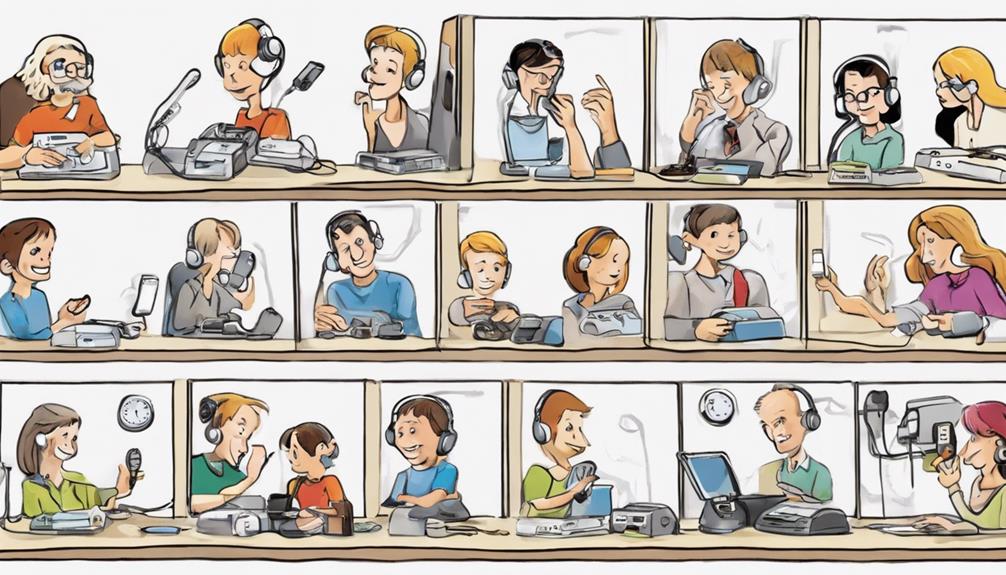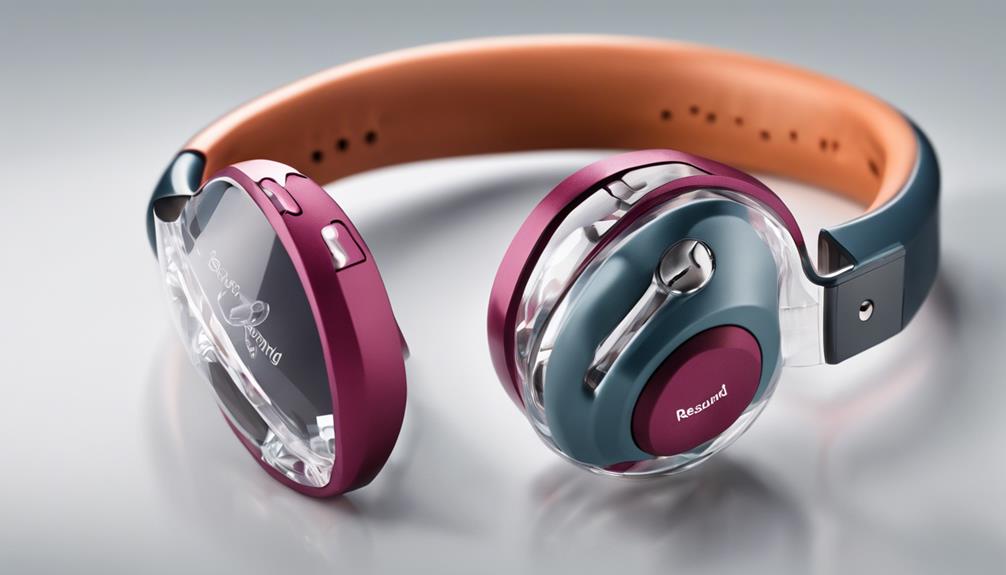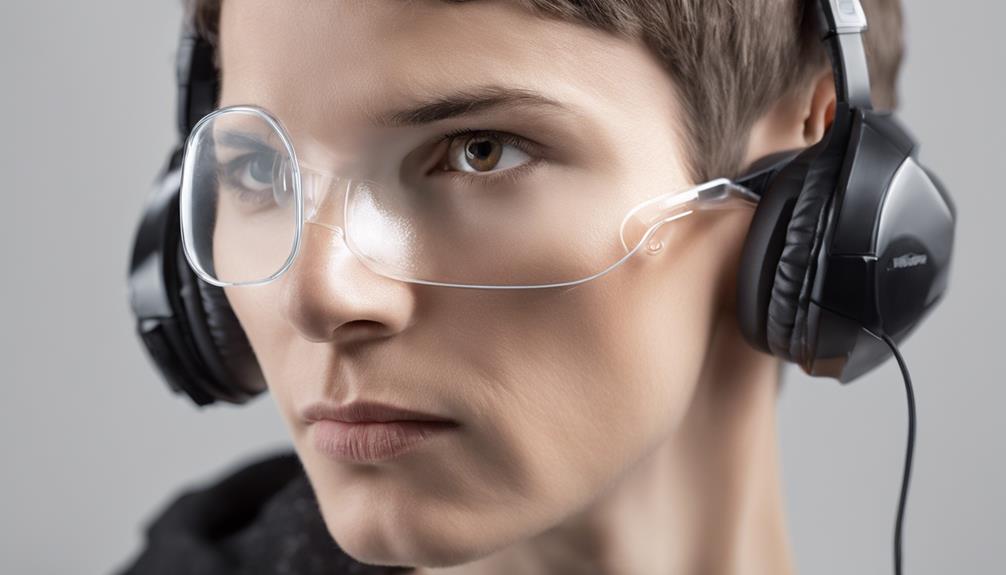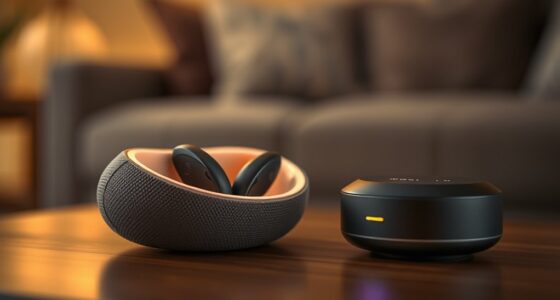Regarding assistive listening technologies for individuals with hearing loss, the Audio Induction or Hearing Loop system distinguishes itself by its capability to eliminate background noise in vast areas, guaranteeing crisp and clear sound reception.
From group settings to personal use, these top 5 devices cater to various needs. Each device offers unique features that can greatly enhance the auditory experience for individuals with hearing impairments.
Let's explore how these innovative tools can make a difference in daily communication and activities.
Key Takeaways
- FM Systems offer personalized listening tailored to user needs.
- Bluetooth Systems allow volume adjustments and sound customization.
- Infrared Systems are ideal for indoor venues like theaters and churches.
- Audio Induction Systems enhance sound clarity in noisy environments.
Audio Induction Systems
Audio Induction Systems, utilizing a microphone, amplifier, and wiring, efficiently transmit sound to provide clear reception in noisy environments. These systems are designed to enhance sound transmission through the use of an induction loop, making them ideal for assistive listening systems in environments with high levels of background noise, such as airports, banks, and theaters. By eliminating background noise, Audio Induction Systems ensure audio clarity, benefiting individuals with hearing loss during group events or in large spaces.
The microphone amplifier within Audio Induction Systems plays a crucial role in capturing sound and converting it into electrical signals, which are then transmitted through the induction loop. This loop effectively delivers the sound directly to the user's hearing aid or cochlear implant, bypassing any interfering background noise. In indoor environments where communication can be challenging due to ambient sounds, these systems prove invaluable in providing the necessary support for individuals with hearing impairments.
FM Systems

Utilizing radio waves for wireless sound transmission, FM systems are highly effective in delivering clear audio directly to individuals with hearing loss in group settings like classrooms and meetings. These systems excel at reducing background noise, ensuring that the intended sound reaches the listener without distortion or interference. FM systems can be seamlessly integrated with hearing aids or cochlear implants, offering users a personalized listening experience tailored to their specific needs.
One of the key advantages of FM systems is their versatility, as they function well in both indoor and outdoor environments, providing accessibility in various settings. The portability and user-friendly nature of FM systems make them a popular choice for individuals seeking to enhance their communication abilities. Whether in a lecture hall or a crowded conference room, FM systems stand out for their ability to deliver pristine audio quality, making group interactions more inclusive and engaging for those with hearing challenges.
Infrared Systems
Infrared systems efficiently transmit sound wirelessly using invisible light beams, particularly suitable for indoor environments such as theaters and churches. Here are some key points about infrared systems:
- Ideal for individuals with hearing loss as they eliminate background noise and provide clear reception.
- Commonly used in theaters, courtrooms, and conference rooms to enhance sound quality.
- Easy to set up and offer privacy by limiting sound transmission to specific areas.
- Suitable for individuals who don't use hearing aids but still require assistance in hearing conversations or presentations.
Infrared systems excel in providing clear and crisp sound in indoor settings where background noise can be a challenge. Their ability to offer privacy and limit sound to specific areas makes them a preferred choice for venues like courtrooms and conference rooms. With their focus on delivering high-quality sound while eliminating distractions, infrared systems are a valuable assistive listening option for those with hearing difficulties.
Personal Amplified Systems
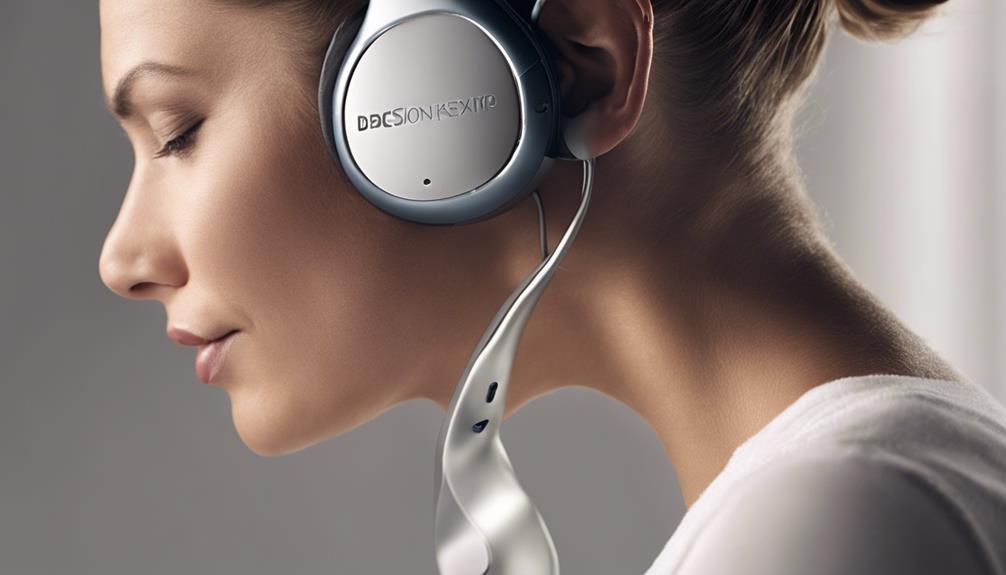
Personal Amplified Systems offer portable solutions for enhancing sound in one-on-one conversations or TV listening, providing clear and amplified audio for users with hearing difficulties. These Assistive Listening Devices (ALDs) are versatile aids suitable for both indoor and outdoor use, catering to individuals with various degrees of hearing loss. Whether or not the user wears hearing aids, these devices can significantly improve the listening experience.
Personal amplified systems are available in different models, equipped with features such as volume control and noise reduction functionalities. Users can fine-tune the settings to accommodate their specific hearing needs, ensuring optimal communication in various environments. By leveraging advanced technology, these systems enhance sound transmission directly to the user, bypassing background noise and focusing on the intended audio source.
With their compact and user-friendly design, personal amplified systems are indispensable tools for individuals seeking improved auditory assistance in daily interactions and entertainment activities.
Bluetooth Systems
How do Bluetooth systems revolutionize sound transmission for individuals with hearing difficulties?
Bluetooth systems utilize Wi-Fi to wirelessly transmit sound and are compatible with Bluetooth-enabled hearing aids. These systems are designed to be versatile, making them suitable for both indoor and outdoor use, catering to various listening environments.
Users benefit from the ability to adjust volume levels and customize sound settings, offering a personalized listening experience tailored to their needs. Additionally, Bluetooth systems provide clear reception, helping to minimize background noise and enhance overall clarity during audio transmission.
With seamless integration capabilities, users can effortlessly connect their devices to smartphones, TVs, or other audio sources, ensuring a smooth and efficient listening experience.
Frequently Asked Questions
What Is the Most Commonly Used Assistive Listening Device?
The most commonly used assistive listening device is the hearing loop system. It utilizes electromagnetic fields to connect wirelessly to telecoils in hearing aids or cochlear implants.
These systems are prevalent in public venues like theaters and airports, offering direct sound transmission to compatible devices. Hearing loop systems are favored for their simplicity, cost-effectiveness, and ability to minimize background noise, enhancing audio reception for individuals with hearing loss.
Is There a Device That Allows Deaf People to Hear?
Yes, there's a device that allows deaf individuals to hear. Cochlear implants and hearing aids serve as effective tools in enhancing auditory perception for the deaf community.
These devices work by stimulating the auditory nerve or amplifying sound waves, enabling us to experience sound to varying degrees.
Through these innovative technologies, we can bridge the gap in our auditory experience and engage more fully in the world of sound.
What Are AAC Devices for Deaf People?
AAC devices for deaf individuals are crucial tools that facilitate effective communication. These devices encompass speech-generating tools, communication boards, and text-to-speech applications.
They play a vital role in enabling non-verbal or speech-limited individuals to express their thoughts, needs, and emotions through various communication methods. AAC devices promote independence and enhance the quality of life for deaf individuals by supporting communication in diverse settings.
What Are the Listening Devices for Apd?
When it comes to assistive listening devices for Auditory Processing Disorder (APD), a range of options exists to enhance sound clarity and comprehension. Audio Induction systems, FM Systems, Infrared Systems, Personal Amplified Systems, and Bluetooth Systems are top choices tailored to the needs of individuals with APD.
These devices offer wireless sound transmission, clear sound through light beams, portability for one-on-one conversations, and compatibility with Bluetooth-enabled hearing aids to optimize auditory experiences in various environments.
Conclusion
In conclusion, these top 5 assistive listening devices for the deaf are like a symphony orchestra, each playing its own unique role to create harmony in the world of communication.
Just as instruments come together to create beautiful music, these devices come together to provide clear, accessible sound for those with hearing loss.
With the right device, the deaf community can tune into the world around them with clarity and ease.

